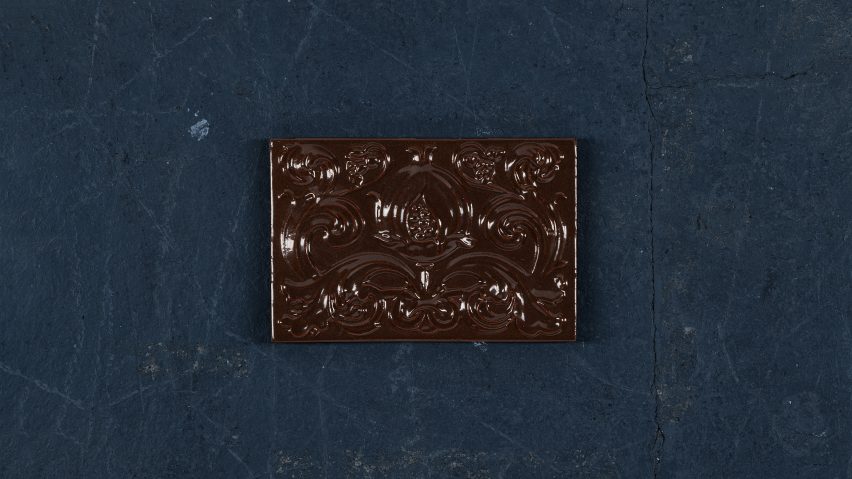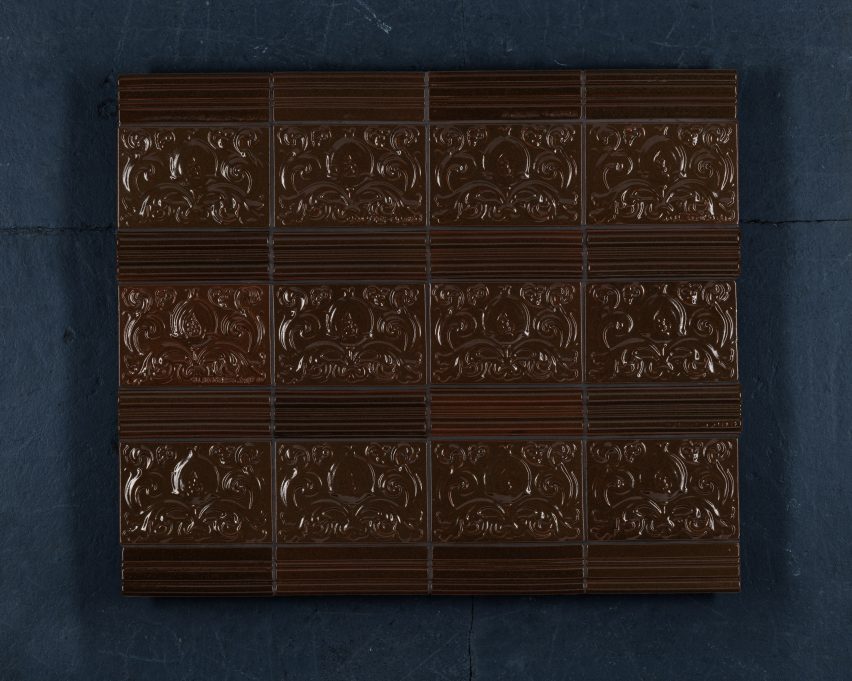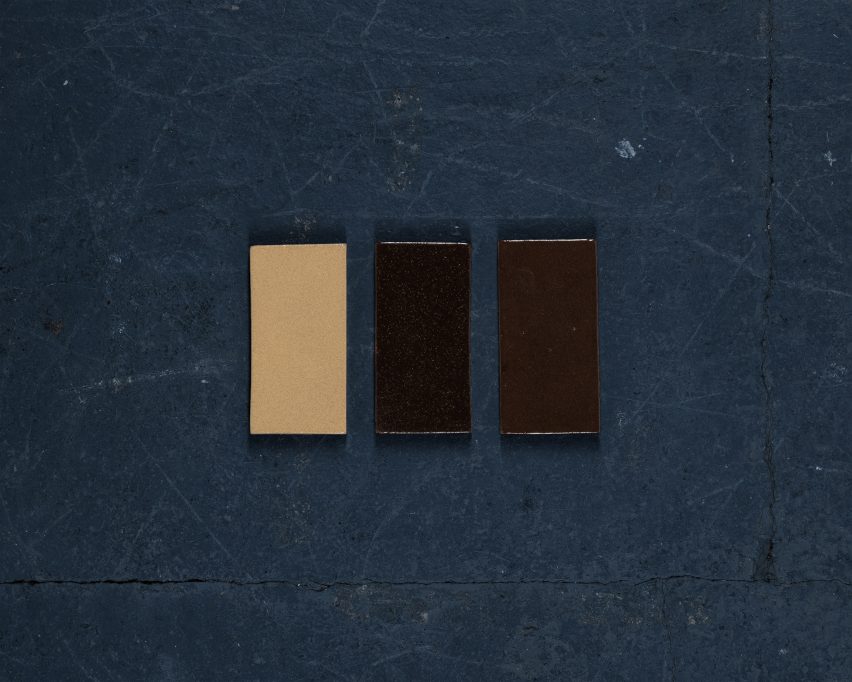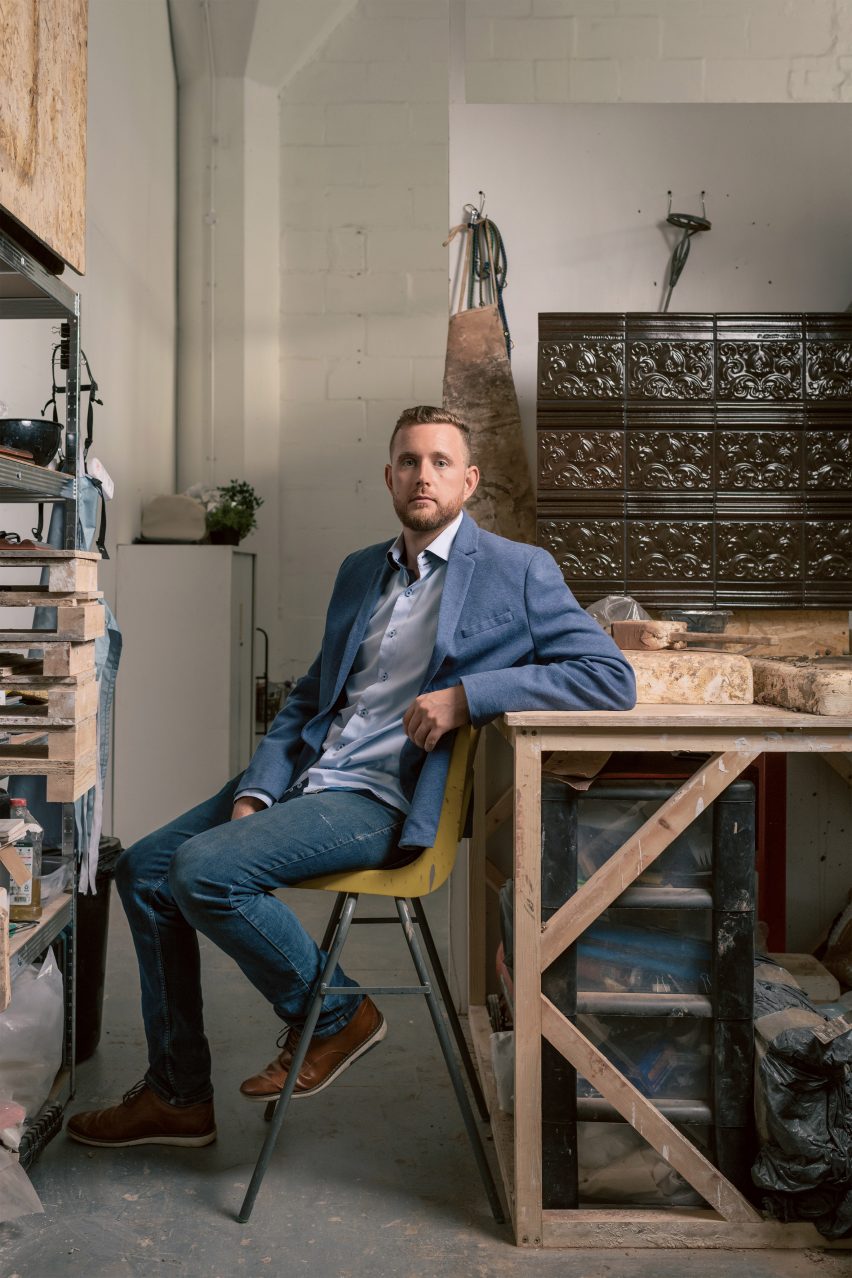
London Underground waste repurposed into tiles for tube stations
Designer Jeffrey Miller has created tiles for the London Underground using the transit system's own waste, as part of his final-year work at Central Saint Martins.
The From the Underground tiles are made using two waste materials produced either from the construction or operation of the tube: London clay and iron oxide-rich dust.
London clay is the soil on which most of the city is built and which is excavated during tunnel boring, while iron oxide dust is created by train wheels as they grind against steel tracks every day.

Miller's clay tiles are cast in an art nouveau design that was already utilised in some of the network's older stations. Originally designed by Leslie Green, the architect behind many of the stations, the tile moulds were loaned by the manufacturer H&E Smith.
The spark for the project came when Miller was sitting on the Central line, listening to the loud screeching as the train hurtled through one of the oldest sections of the railway.
Curious about the byproduct of all that friction, he began his research and eventually found a study that identified the main component of the dust as iron oxide — a chemical compound that Miller, a practiced ceramicist, knew could be used to pigment glaze.
The dust is visible as a black substance on the train tracks and other nearby areas.

Obtaining the dust, however, proved tricky. Without a collaborator at Transport for London (TfL) – the local government body that runs the network – he had to collect it himself, going from station to station with a vacuum cleaner.
"I didn't vacuum the actual tracks, because that was maybe a little bit too risky," Miller told Dezeen. "But I vacuumed the grooves on the platform right before you step onto or off the train. A lot of dust had collected in there."
The dust was mixed with contaminants such as dirt and human hair, but the designer embraced the slight imperfections that this brought to the glaze.

The idea to use London clay, meanwhile, arose through conversations Miller had with a geologist, who gave him a contact who worked on tunneling projects in London and could provide waste-borehole samples full of the clay.
The challenge with using the clay, Miller says, is that it took a lot of processing and testing to get it to a stage where it could be used to make objects.
The processing involved drying out the clay, crushing it, reconstituting it with water and then filtering out the non-clay particles before mixing it together again and testing how it behaved when fired in the kiln.
"Working with wild clays is rewarding," Miller said. "Usually in ceramics, you don't really get access to this process. And it's quite nice to be almost filling in all the gaps along the route of the creation of something."
Miller says he undertook the From the Underground project to reflect upon how materials are used in the built environment, often with an "opaqueness" around their provenance. For tiles, the materials are typically virgin resources obtained through open-pit mining.
"The whole crux of this project was seeing how the underground, which is this very uncommon place for resource extraction, could be used for resource extraction," he said.

"I actually didn't think when I started that it would be something that could be scaled up until I started working on it and realised the scale of the materials that are involved," he continued. "For the clay, you're dealing with hundreds and hundreds of metric tonnes for an excavation of usable material."
"For the iron oxide, there's 400 kilometres of track along the Underground and it gets covered in this black stuff that they have to dispose of quite regularly."
Miller, who completed the project as part of his masters in Material Futures at Central Saint Martins, is hoping to work with TfL to see his tiles actually used in the London Underground one day.
By using the Leslie Green-designed mould, he has created a product that could theoretically be used to replace broken tiles in station restorations.
Other recent tile designs to have made use of waste material have come from Snøhetta and Studio Plastique, who drew on recycled oven and microwave glass, and Kazakh designer Enis Akiev, who created a marbled effect with single-use plastics.
Photography by Sarel Jansen.